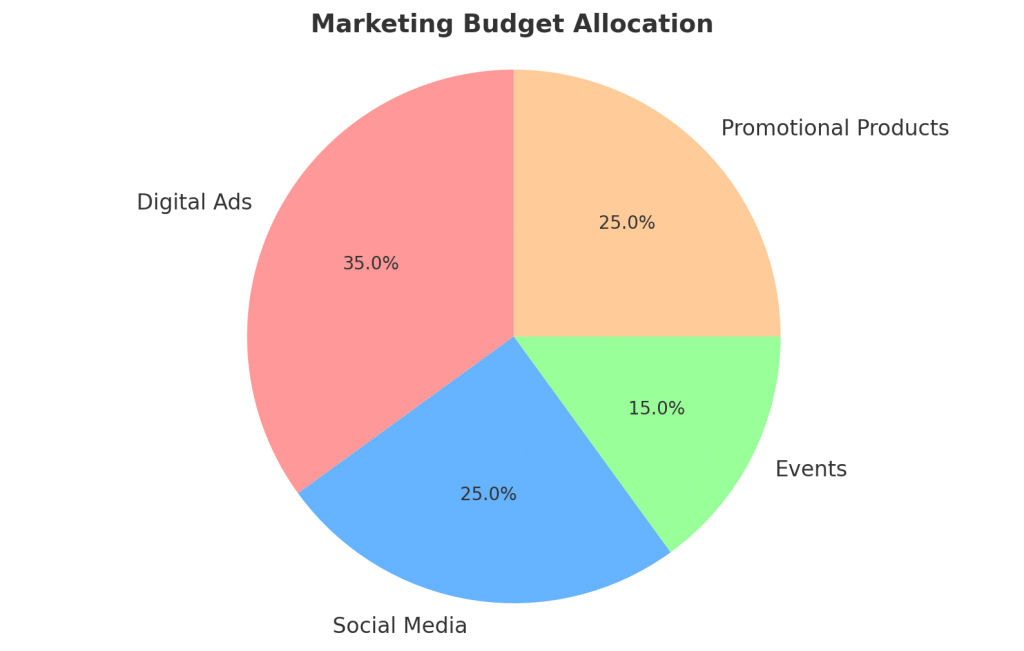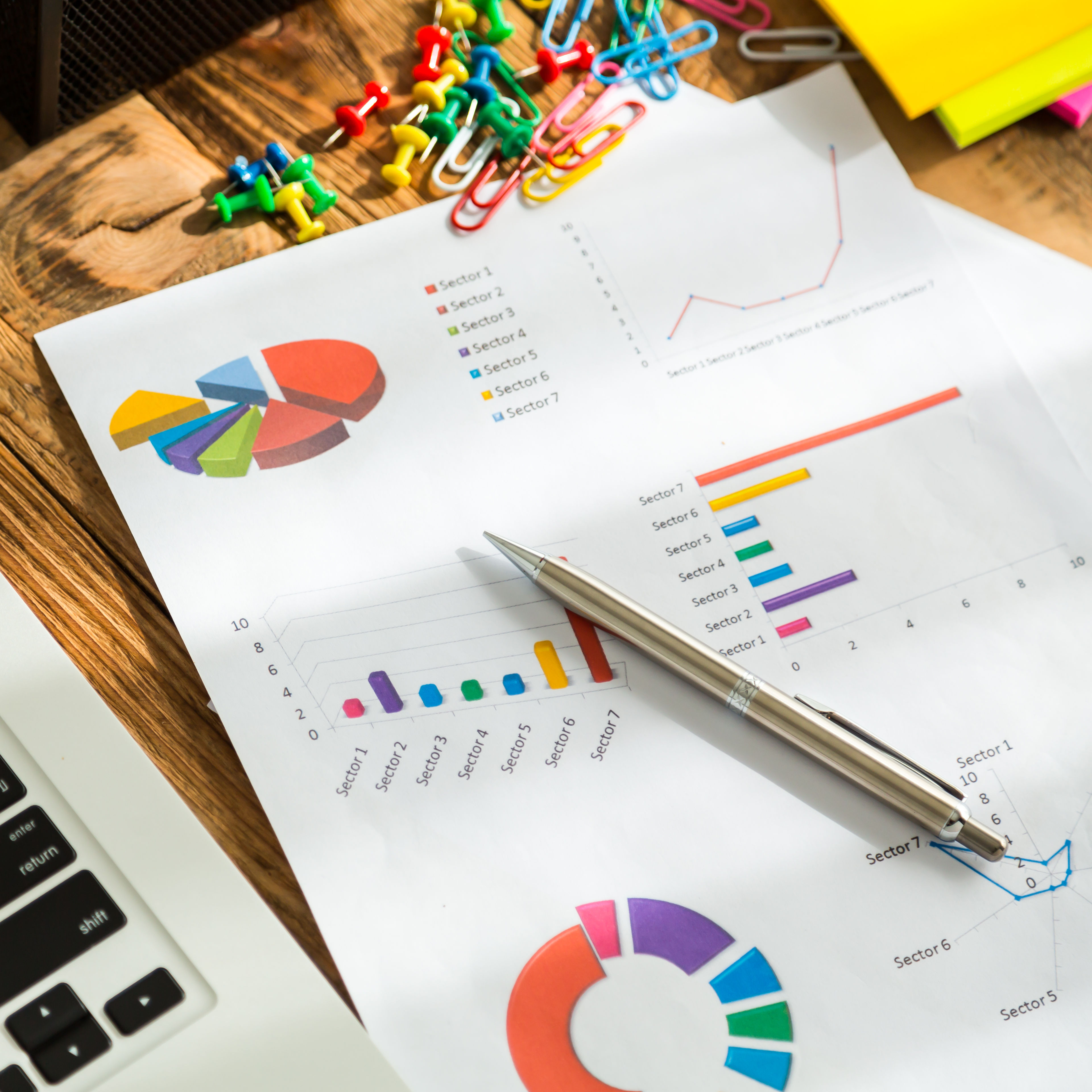Let’s tackle a common conundrum: where is the best place to spend your marketing dollars when it comes to promotional products?
In this guide, we’ll take a look at the easy steps you need to know to get it right. We’ll explore how to cleverly distribute your funds across various promotional items, ensuring they’re not just fun freebies, but become real players when it comes to boosting your brand.
It’s all about making your marketing budget work smarter, not just harder.
Understanding Your Marketing Goals
To effectively allocate your marketing budget to promotional products, it’s essential to first understand your marketing goals.
Align Promotional Products with Your Business Objectives
First things first, let’s talk about your business goals. What are you aiming to achieve? It could be boosting sales, increasing brand awareness, or launching a new product. Whatever it is, your promotional products must align with these goals. It’s like choosing the right tools for a job. After all, you wouldn’t try to use a shovel to cut down a tree, the same idea applies when it comes to boosting brand awareness.
If you are all about visibility, then bright colours and eye-catching items are your friend. If it’s customer loyalty you’re looking for, then it is all about quality; Higher quality items not only show consumers that you care about them and how your business impacts them, but they also last longer, keeping your brand, quite literally, in hands and minds longer.
Identify Your Target Audience and Market Segments
Next up, who are you trying to reach? Your promotional products will only hit the mark if they appeal to your target audience. It’s like picking a birthday gift – your teenage cousin may love a new gameboy, your grandma maybe not so much.
Understanding who your customers are means you can know both what they like and what they need, and tailor your marketing to appeal to this. What appeals to a young tech guru may not be the same as what the modern health enthusiast is looking for. New parents trying to overcome sleepless nights with a newborn have different needs to career-driven professionals working their way up the corporate ladder.
Understanding the wants and needs of your customer base can give you a critical edge in choosing promotional items that resonate and make a lasting impact on these individuals.
Set Measurable Goals for Promotional Campaigns
Finally, let’s get specific about what success looks like. Setting measurable goals for your promotional campaigns is crucial. It’s not just about giving away free stuff; it’s about knowing what you want in return for these freebies. After all, nothing in the world is completely free.
So, when giving away promotional items, what do you want back? Do you want to see a 10% increase in sales? Grow your email list by 500 subscribers? Boost social media engagement by 20%?
These clear and measurable targets help you to track progress and gauge the effectiveness of the promotional products that you are putting out into the world. Remember, what gets measured gets managed!
Budget Allocation Fundamentals
Spending your marketing budget is like planning a road trip. You need to know how much gas you’ve got and how to use it to reach your destination.
So, how do you allocate your budget to get the most out of your promotional products and not get lost on backroads along the way?
Percentage of Marketing Budget for Promotional Products
There’s no one-size-fits-all answer when it comes to how much of your budget should go to promotional products. It all depends on your individual business and your goals for this business. For some, it might be as little as 10%. For others, 20% or more may make a real difference in achieving your business goals.
Again, it comes back to the importance of understanding what you actually want to achieve. If promotional products are a major part of your strategy, it might be beneficial for you to allocate more to creating these than if they are just a small part of your overall marketing plans.
But remember, it’s not just about the percentage; it’s about how effectively you use that budget. How best you can reach your destination without wasting any gas on unnecessary back road detours.

Factors Influencing Budget Allocation Decisions
Several things can affect how you split your budget. Your business size, industry, target audience, and even the time of year can play a part.
For example, if you’re a small business targeting local customers, you might spend more on promotional items for more locally based community events that are more likely to reach a local audience. Or, if you’re launching a new product, you might invest more in promotional products to create a growing buzz around this new and exciting venture.
Always focus on your goals and adjust your budget to cater to what works best for your business.
Evaluating Promotional Product Options
Choosing the right promotional products is like picking the right tools for a job. You want to make sure they’re the perfect fit for what you’re trying to achieve.
Let’s explore the types of products available, weigh their costs and benefits, and consider how customisation plays into your brand’s image.
Types of Promotional Products and Their Impact
Promotional products come in all shapes and sizes. Here’s a quick rundown:
- Wearable Items: T-shirts, hats, wristbands. These are great for visibility, especially at events where there are lots of eyes to capture.
- Office Supplies: Pens, notebooks, USB drives. Useful for keeping your brand on desks and in minds and can help with a more slow-burn strategy.
- Tech Gadgets: Phone chargers, earbuds. Trendy and appealing, especially to younger audiences and can be great for appealing to a more tech-savvy market.
- Eco-Friendly Products: Reusable bags, bamboo utensils. These help to show that your brand cares about the environment, and with a growing concern for environmentalism, it’s never been hotter to promote a cooler world.
Each type has its own way of connecting with people. Wearables are walking billboards, while office supplies are daily reminders of your brand.
Cost-Benefit Analysis of Different Product Categories
Let’s talk about getting the most bang for your buck. Here’s a simple way to think about it:
| Cost Category | Product Examples | Impact & Use |
| Low Cost, High Impact | Pens, Keyrings | Affordable, wide reach, great for general brand awareness |
| Higher Cost, Targeted Impact | Tech Gadgets (e.g. earbuds, phone chargers) | More expensive, significant impact on specific audiences |
| Balanced Options | Reusable Water Bottles | Good balance of cost and visibility, versatile for many events and have a wide appeal for many audiences. |
Budget Optimisation Strategies
Optimising your budget for promotional products is like fine-tuning a Formula One engine – it’s all about efficiency and impact.
Let’s dive into how you can source and produce more cost-effectively, negotiate better deals, and make the most of what you have.
Cost-Effective Sourcing and Production
Getting the best value for your money starts right at the source. Consider these tips:
- Bulk Purchasing: Buying more often means spending less per item. Plan your needs for the year and order in bulk to save.
- Choose Local: Local suppliers can offer lower shipping costs and quicker turnaround times, which can be a boon for your budget.
- Eco-Friendly Equals Economical: Sometimes, sustainable options are good for the planet and your wallet. They can be cost-effective and appeal to a growing eco-conscious customer base.
Negotiating with Suppliers and Partners
A good negotiation is not just about cutting costs; it’s about creating value for both parties. Here’s a narrative on how to approach it:
Imagine walking into a meeting with your supplier. You’ve been working with them for a while now. Today, you’re not just asking for a lower price, you’re discussing how a long-term partnership can benefit both of you. You talk about volume discounts, not as a demand but as a mutual benefit. You explore flexible payment terms to help you better manage your cash flow. This isn’t just a negotiation; it’s a strategic discussion.
Finding a solution that offers a good deal for you and provides benefits to suppliers and partners greatly increases your chances of getting the outcome you desire. This approach can also help to build positive business relationships and loyalty as well.
Maximising Impact with Limited Resources
Even with a smaller budget, your promotional products can still make a big impact. A local cafe had a great example of using creativity to boost their brand awareness and customer loyalty without having to break the bank.
This creative local coffee hub had a limited budget so they decided to invest in branded reusable coffee cups. But, they didn’t stop there. They encouraged customers to share photos with their cups on social media, offering a small discount for every post. This approach turned a simple item into a powerful marketing tool, creating buzz and customer engagement without needing a big budget.
By adopting these strategies, you’re not just saving money but making every dollar work harder and smarter for your brand.
Wrapping Up
Innovation doesn’t always have to mean higher costs. I encourage you to think creatively within your budget constraints. Sometimes, the most impactful promotional strategies come from thinking outside the box, not spending outside your limits. Test new ideas, measure their effectiveness, and adjust your budget accordingly.
If you’re feeling overwhelmed or need some guidance, we’re here to help. At Payless Promotions, we don’t just offer promotional products; we provide customised solutions tailored to your unique marketing needs. Reach out to us for a personalised consultation.
